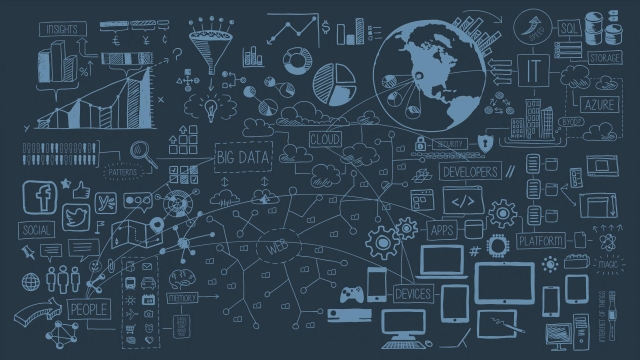
Research and data analysis are the building blocks that pave the way for remarkable discoveries and revolutionary breakthroughs. They serve as the compass that guides us through the vast sea of knowledge, enabling us to uncover hidden insights and make informed decisions. This article invites you on an exhilarating journey into the world of research and data analysis, as we unravel the mysteries that lie beneath the surface and explore the transformative power they hold.
Through research, we embark on a quest to expand our understanding of the world around us. It allows us to delve into uncharted territories, seeking answers to questions that have piqued our curiosity. Whether it’s exploring new scientific frontiers, unearthing historical truths, or examining societal phenomena, research serves as the driving force behind progress and innovation. It empowers us to challenge existing knowledge, question assumptions, and push the boundaries of what is known.
But research alone is not enough. It is the careful analysis of data that breathes life into our findings, transforming raw information into meaningful insights. Data analysis equips us with the tools to derive patterns, draw conclusions, and make evidence-based decisions. It provides a lens through which we can make sense of the complex and chaotic world we inhabit, offering invaluable guidance amidst the sea of information that surrounds us.
Join us as we embark on this exhilarating expedition, where we will demystify the process of research and delve into the inner workings of data analysis. Together, we will uncover the hidden treasures that lie within the realms of research and data analysis and discover the immense power they hold to shape our understanding of the world. By the end of this journey, you will be equipped with the knowledge and insights to embark on your own ventures of exploration and analysis, allowing you to navigate the vast oceans of information with confidence and clarity. Welcome, fellow seekers, to the adventure of a lifetime.
https://www.capstone-dissertationwritingservices.com/Dissertation-literature-review-help-464.html
The Importance of Research
Research is a fundamental aspect of gaining insights and understanding in any field. It enables us to delve deeper into a subject, uncover hidden truths, and make evidence-based decisions. At its core, research is a systematic investigation that involves gathering and analyzing data to explore and validate theories or hypotheses.
In today’s fast-paced world, where information is abundant but often overwhelming, research plays a crucial role in separating fact from fiction. By conducting thorough research, we can verify the accuracy of existing knowledge and discover new knowledge. Research provides the foundation on which progress is built, driving innovation and advancing our collective understanding.
Data analysis is an integral part of research, helping us extract meaningful insights from the vast amount of data available to us. By applying statistical techniques and mathematical models to data, we can identify patterns, correlations, and trends that might otherwise go unnoticed. Data analysis empowers researchers to make informed decisions and draw reliable conclusions.
Research and data analysis also foster critical thinking and problem-solving skills. They encourage us to question assumptions, explore alternative perspectives, and challenge existing theories. Through research, we can push the boundaries of knowledge and uncover novel solutions to complex problems.
In conclusion, research and data analysis are indispensable tools in expanding our understanding of the world. They enable us to gain valuable insights, separate fact from fiction, and drive innovation. By conducting rigorous research and utilizing effective data analysis techniques, we can uncover hidden truths and make informed decisions that have a lasting impact.
Methods and Techniques of Data Analysis
In the realm of research and data analysis, various methods and techniques are employed to extract valuable insights from raw data. These methodologies allow researchers to uncover patterns, trends, and relationships that would otherwise remain hidden. Through the use of statistical tools and specialized software, data analysts are able to make sense of vast amounts of information and draw meaningful conclusions. In this section, we will explore some of the most commonly used methods and techniques in data analysis.
-
Descriptive Analysis: One of the fundamental techniques in data analysis is descriptive analysis. This approach involves summarizing and organizing data to provide a clear understanding of the underlying patterns. Descriptive analysis techniques include measures of central tendency, such as mean, median, and mode, which help researchers understand the average or typical value of a dataset. Additionally, measures of dispersion, such as range, variance, and standard deviation, provide insights into the variability and spread of the data points. By employing descriptive analysis, researchers can gain initial insights into the characteristics of their dataset and identify potential areas of interest for further investigation.
-
Inferential Analysis: Inferential analysis is a method used to draw conclusions or make predictions about a larger population based on a sample of data. This approach involves statistical tests and techniques that help researchers generalize findings beyond the observed data. By employing inferential analysis, researchers can make probabilistic inferences and quantify the level of confidence in their conclusions. Common inferential analysis techniques include hypothesis testing, correlation analysis, regression analysis, and analysis of variance (ANOVA). These techniques enable researchers to explore relationships, test hypotheses, and make predictions based on the data at hand.
-
Data Mining: Data mining is a technique that involves searching for valuable patterns or information in large datasets. It encompasses various algorithms and statistical models that help identify hidden relationships or trends within the data. Data mining techniques are particularly useful in identifying patterns that may not be immediately apparent, such as associations, clusters, or anomalies. By leveraging data mining techniques, researchers can uncover novel insights and make data-driven decisions. Some commonly used data mining techniques include decision trees, association rule mining, neural networks, and clustering algorithms.
In conclusion, the methods and techniques of data analysis provide researchers with powerful tools to extract insights and knowledge from raw data. By employing descriptive analysis, inferential analysis, and data mining techniques, researchers can uncover patterns, make predictions, and gain a deeper understanding of their datasets. These methods serve as the backbone of research and data analysis, enabling researchers to transform raw data into valuable information.
Interpreting and Presenting Findings
In the final stage of research and data analysis, the focus shifts to interpreting and presenting the findings. This critical step allows researchers to make sense of the data they have collected and draw meaningful conclusions. By carefully analyzing the information at hand, valuable insights can be extracted and shared with others.
One aspect of interpreting findings involves examining patterns and trends within the data. Researchers often use statistical techniques to identify relationships between variables or to uncover significant differences. By delving deeper into the data, the researcher can discern key insights that may have been hidden at first glance. These insights provide a basis for further analysis and can help guide decision-making processes.
Once the findings have been interpreted, it is essential to present them in a clear and concise manner. Effective data visualization techniques play a crucial role in conveying complex information to a wider audience. Charts, graphs, and other visual representations help make the findings more accessible and facilitate the understanding of trends and patterns. Well-designed visuals not only enhance communication but also aid in the retention of information.
Finally, presenting findings involves conveying the implications and significance of the research. It is essential to contextualize the findings within the larger research landscape and highlight their relevance. By discussing the practical implications and potential applications of the findings, researchers can demonstrate the practical value of their work.
In summary, the interpretation and presentation of research findings are vital parts of the overall research and data analysis process. Through careful examination and analysis of data, researchers can identify meaningful insights and draw conclusions. By effectively communicating these findings through data visualization and contextualization, researchers can make their work accessible and create a lasting impact within their field.






